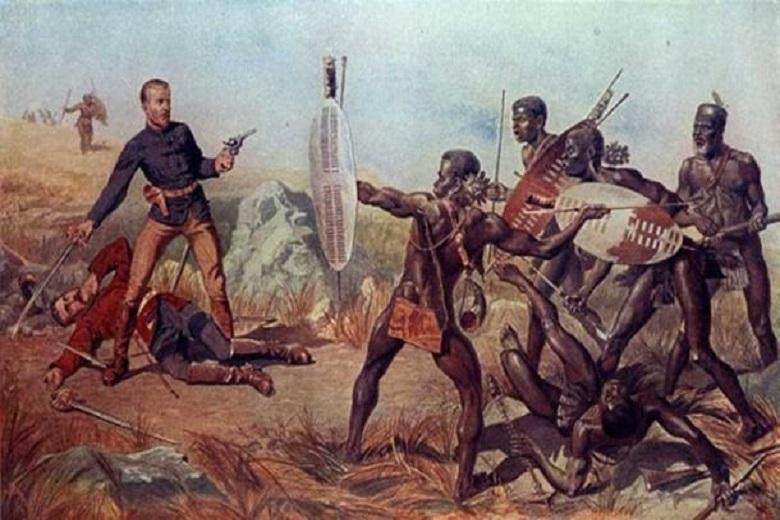African armies continued to defeat Europe’s best troops until the last quarter of the 19th century. Despite superior weapons, European armies could still fall victim to defeat until the end of the 19th century. A Zulu army wiped out a British force in 1879, and an Italian army suffered a crushing defeat by Ethiopians in 1896.
European colonization only really began when Europeans surpassed the African with an automatic weapon. The Maxim pistol was a real player.
If Africa had not had complex societies and states around the time of European expansion in the 1400s or even Islamic expansion much earlier, Africa would have ended up like the Native Americas and Australian Aborigines.
Below is a brief list of military defeats suffered by European troops in Africa.
Woyowayanko, Dabadugu, Soyo, Dogali, Isandhlwana, Adwa, The Franqui Expedition, Minonge Ravine, Mbandi Kasi, Mongwe, eCeceni, Mpofana, Asikuma, Bobikuma, Dul Madoba, Rugaro, Elbejet, Viervoet, Fort Johnstone, Pembe Drift, Cunene, Nsamankow, Efutu, Kitombo, Intombe Drift, Anoual, Togbao, Kouno
At first glance, it may seem surprising that Europeans could not successfully penetrate Africa until the late nineteenth century, since Africa is, after all, Europe’s closest neighbor and the first continent with which Europe made contact both in the ancient world and in the early modern period.
This helps us understand why Europeans could not penetrate Africa as successfully as they penetrated the Americas and Asia in this period. Africans successfully resisted them. It used to be expected to explain European difficulties in Africa in terms of geography, climate, and disease. But at this stage, Europe did not enjoy the military advantage it later established.
Just beyond the coastal belt of West Africa lay a succession of powerful states, many of which had well-organized armies. There were also important states in East and Central Africa, and the black military revolution in South Africa in the early nineteenth century gave some African peoples new forces of resistance there too.
Europeans continued to suffer defeats at the hands of Africans, such as the Ashanti, Zulu, and Abyssinians, until the end of the nineteenth century. But Europeans had created a vast technological gap in firearms. Rapidly repeating machine guns had been invented (the Gatling in the late 1860s and the maxim shortly after), allowing Europeans to conquer large African armies with small forces.
Europeans ensured that Africans were never given machine guns.
When Europeans finally became a military match for Africans, they were also solving some of Africa’s medical problems. From the 1850s, quinine was used as a prophylactic agent (a medicine to prevent the outbreak of the disease rather than cure it after it had occurred), and efforts were made to overcome the problems of the tsetse fly.
